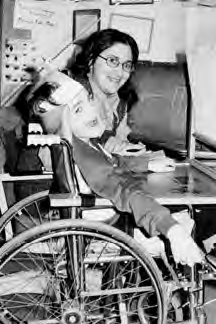History
A Legacy of Caring, Devotion and Hope
Firm Foundations Laid in First Decade
Many times, the greatest things start with humble, quiet beginnings. For Aspire of Western New York, a young mother planted the seeds that would soon grow into a legacy of caring, devotion and hope.
March 1945
Our Beginning

Sherwood Moss was born March 25, 1945, to Mr. and Mrs. David Moss. A year-and-a-half later, Sherwood was diagnosed with cerebral palsy. There was little assistance for the Moss family as they lovingly cared for their son. Mrs. Mary Moss was fortunate to have a group of friends in the Junior League of Buffalo – an educational and charitable women’s organization aimed at helping the community and promoting volunteerism – who wanted to help. Mary mobilized friends, family and other parents of children with cerebral palsy to form the Cerebral Palsy Association of Western New York on September 19, 1947.
September 1949
A Dream Come True for Young Adults

An article from the September 13, 1949, edition of The Buffalo Evening News vividly described what would be called the Young Adult Cerebral Palsy Center:
“For the first time in their lives a group of young men and women are looking forward to a gay winter full of happy, interesting days. Accustomed to watching other boys and girls, these young people now are being offered a brand-new slice of living. They will go out at least one night a week for social recreation—go out wheelchairs and all. These young men and women are handicapped by cerebral palsy. (Statistics show that 95% of cerebral palsy happens at birth—so for nearly every member of this group it’s been a long time!)”
Mrs. Howard M. Sharp, chairman of the Palsy Association, called the center’s opening a dream come true at its first meeting on September 23, 1949, according to the Courier-Express. She pointed out that one of the first treatment centers for young people with cerebral palsy was opened at Children’s Hospital just seven years before. Thomas O’Neill also spoke. He told attendees that the Palsy Association and the Junior League have “laid firm foundations upon which citizens of Buffalo can build a structure which will not only open the eyes of this country but may serve as a model to be copied by the entire world.”
October 1949
Educating Ourselves and the Community

- Working together, the Cerebral Palsy Association and the Junior League began studying the problem of cerebral palsy. After a year and a half of study, an October 9, 1949, article from the Buffalo Courier-Express reported that the organizations had made significant progress in educating the community about cerebral palsy’s meaning and treatment methods, while also lobbying for state legislation. The organizations also realized there was no place in the community for young adults with cerebral palsy to meet together. They decided to establish a recreation program, said to be the first of its kind. Meeting space was donated by the Crippled Children’s Guild at 936 Delaware Avenue.
1951-54
Growth and Expansion

By 1951, the agency grew to include not only the recreation program, but also administrative offices, a preschool and a research library. Space was rented at the Variety Club Clinic, operated by Children’s Hospital at the Victorian mansion, 309 North Street. The preschool services expanded in 1952, when children ages three to seven could be enrolled. Children were transported to Children’s Hospital for therapeutic or medical services with the use of two new station wagons donated by the Junior League of Buffalo, Inc. In 1954, the agency purchased the Victorian mansion.
1958
Staying Hopeful

Things weren’t always easy, though. In 1958, the Community Chest experienced a pinch, and the budget did not provide adequate funding for the Cerebral Palsy Association, which was citing a need and desire to expand. The agency would search for additional sources of income.
The possible expansion was called a “giant step” by the Courier-Express on February 18, 1958:
Funds and a few other factors permitting, the Cerebral Palsy Assn. of Western New York may take a giant step in the near future in crossing the boundary lines suggested by its organizational name. The contemplated expansion would involve both a geographical extension of the scope of its services beyond the eighth judicial district and a concern for handicapped persons other than the cerebral palsied.
The announcement would prove to be extremely significant in the scope of the agency’s history. “The hope of a new building looms in the background of its thinking,” the article continues. “With the strides the agency has made to date, it’s a good bet it will all come about somehow.”
1960s
Inclusion Expands

In 1961, a joint venture of Niagara Vocational Rehabilitation Center and CPA of WNY results in the purchase of a warehouse building at 100 Leroy. The space was used to expand enrollment in the preschool, vocational rehabilitation programs, and a new day care program for severely physically involved children. In 1965, CPA of WNY changes the admission policy to include children with disabilities other than cerebral palsy.
In 1969, the Agency becomes affiliated with the State Cerebral Palsy Organization.
1970s
Home and Residential Services

In 1971, the agency became officially known as United Cerebral Palsy Association of WNY, Inc. (UCPA) and obtained state licensing to develop a free-standing clinic. The decade of the 1970’s was integral to the agency’s development of Home and Residential Services. The first residential facility was opened in 1973 at the Elmer Lux Hostel on Halbert Street in Buffalo. To expand programming for adults with disabilities, the newly acquired Audubon Campus housed UCPA’s Adult Services programs.
1980s
A Decade of Growth

The 1980’s included more growth for UCPA as a Respite Care Center was founded in Tonawanda, while 7 Community Drive became home for Adult and Day Services, the Adult Clinic, Recreation, and Home Services. In 1984, the first Children’s Intermediate Care Facility (ICF) was founded at the Audubon Campus to provide intensive medical and behavioral supports. That same year, the Cerebral Palsy Foundation of WNY was created as the fundraising arm for the agency.
1990s
Giving Individuals a Choice

In 1992, long-time board member Walter Brock was honored with the opening of the Walter Brock Center on Genesee Street to house Rossler Day Treatment services. Technology Today began providing computer training and other technology programs for individuals with disabilities. By the late 90’s, vocational services were introduced allowing individuals to pursue vocational goals. Changes were made, offering more choice and individualized supports. UCPA also began supporting the Southern Tier.
March 2003
Representing Our True Spirit

By 2003, another transition took place to better represent the agency as it had developed beyond its humble beginnings. Less than 35 percent of those served had cerebral palsy. The remaining individuals included those with mental retardation, epilepsy, traumatic brain injury, and other neurological conditions. Because the agency supported people with all imaginable disabilities and was helping them strive to achieve their greatest capabilities, the agency felt a new name that more fully represented the spirit of the organization should be developed. In light of this, the agency disaffiliates with United Cerebral Palsy and on March 14, 2003, the agency became known as Aspire of Western New York.
Also in 2003, Aspire of WNY began and completed the building and move in of a new Audubon Administrative Office Building, which would house administration, as well as the Walter Brock Center, now known as the Brock Day Hab.
2004-05
Southern Tier Services Get a Home

In June 2004, Aspire of WNY began construction on a new administration building in the Southern Tier to better serve individuals in Jamestown and the surrounding areas. The site, located at 140 Mall Boulevard in Lakewood, was completed in September 2005.
2014-15
Building Bright Futures

A major expansion and renovation at the Center for Learning, located at 4635 Union Road in Cheektowaga, was completed as part of the largest capital campaign in agency history. The new Center for Learning is 73,000 sq. ft. of space dedicated to the education of your students. The original half-century-old building was only 53,000 square feet. The additional 20,000 sq. ft. of new space was developed to enhance overall services provided at the Center for Learning.
Today and Beyond
The Legacy Continues

Today, Aspire of WNY continues to build upon a foundation where individuals make personal choices to determine their life path and help them achieve the dreams within their capabilities. For nearly 75 years, the agency has been committed to helping people achieve their goals for life at home, school, work, and in their community. By embracing change through the years, Aspire of WNY has had an impact on supported individuals and those who work with and for the agency.
For the next 75 years and beyond, Aspire of WNY will continue to encourage people to dream big and create a meaningful vision for their life.
